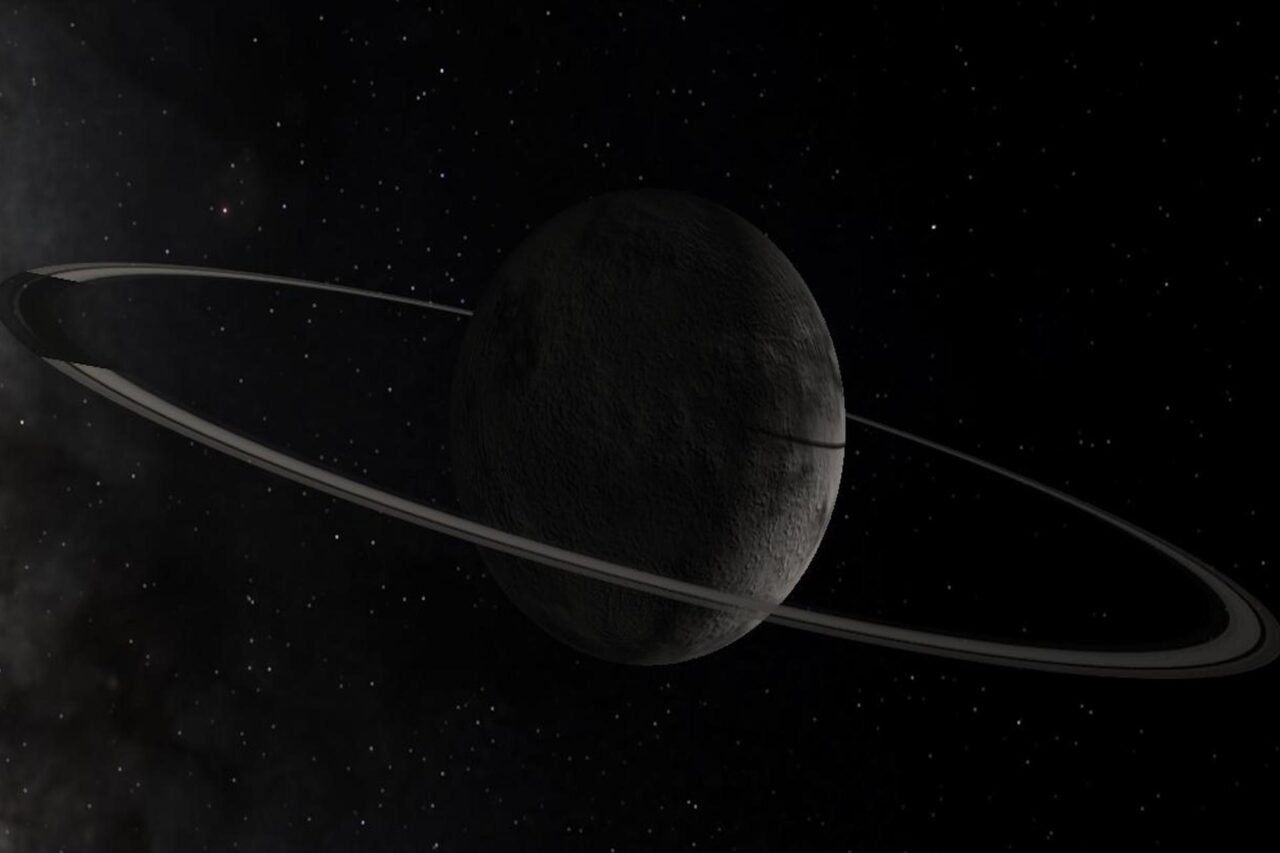A team of astronomers has identified signs of a ring system forming around Chiron, a small icy body located in the outer solar system. This rare phenomenon is being observed in real time, providing a unique opportunity for scientists to study the evolution of celestial bodies. Their findings, published in The Astrophysical Journal Letters, suggest that Chiron may be transitioning from a cloud of debris into a structured ring system.
Observations Suggest Ring Evolution
Chiron, discovered in 1977, is notable for being the first object identified between the orbits of Saturn and Uranus that is neither a planet nor a moon. This discovery led to the classification of a new category of celestial objects known as centaurs. For years, astronomers have speculated about the possibility of Chiron hosting a ring system, and recent observations have provided fresh evidence to support this hypothesis.
During observations conducted at the Pico dos Dias Observatory in Brazil, the research team, led by postdoctoral researcher Chrystian Luciano Pereira from the National Observatory (ON/MCTI), monitored Chiron as it passed in front of a distant star in September 2023. The team noted multiple dips in the star’s light, which indicated that Chiron may have a ring system or a temporary cloud of debris surrounding it. This was a significant finding, as the light did not simply dim once but exhibited a pattern consistent with the presence of rings.
The recent data revealed that Chiron is encircled by three well-defined rings, located approximately 273 kilometers, 325 kilometers, and 438 kilometers from the surface of the centaur. Additionally, a fourth ring was identified at a distance of around 1,400 kilometers. While the three main rings had been hinted at in earlier observations, the fourth ring is a relatively new discovery that requires further analysis to confirm its status.
Understanding Ring Formation
The discovery of these rings is significant not only for understanding Chiron but also for gaining insights into how ring systems form around celestial bodies. Rings typically arise from debris that is captured by a planet’s gravitational influence. Notably, Chiron’s fourth ring lies beyond the Roche limit, the distance at which a smaller celestial body would disintegrate to form a ring rather than coalesce into a moon.
The research team aims to conduct additional observations of Chiron as it continues to transit in front of distant stars. These future studies could offer essential insights into the nature of the material surrounding Chiron and further elucidate the processes involved in the formation of ring systems. If confirmed, the formation of a ring system around Chiron would provide scientists with a rare opportunity to observe the early stages of ring development, similar to those seen around the larger gas giants like Saturn.
This ongoing research highlights the dynamic nature of our solar system and the potential for new discoveries in the study of celestial objects.








































































